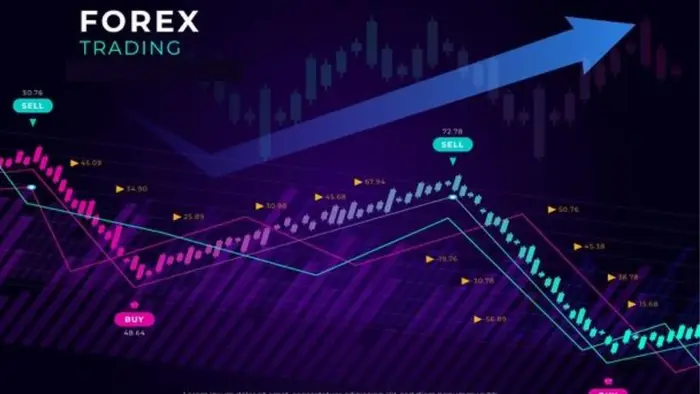There is no doubt how vital technology is in our lives now and the digital revolution that has followed in its wake. This is easy to see in our personal lives, for example, where smartphones and video call tech show how digital innovations play a key role in society. Online tech has also been a transformative development for many sectors, and this is certainly true for how people trade the world’s financial markets now.
Trading on the huge global forex(FX) market is a case in point and something that is simpler than ever to do via online FX brokers. These digital brokerage platforms are simple to register with, straightforward to use, and have opened up FX trading to a much larger audience.
There are also dedicated platforms for FX traders to use online which provide access to the forex market live movements and enable investors to conduct proper research before making any moves.
Technical analysis in FX: What is it all about?
Anyone who starts to think about investing in the forex market will soon hear about technical analysis. This is one way of conducting research into what the markets are doing and involves looking at the latest price action charts to see how the currency pairs one might trade are performing. It also involves looking at these charts to track a pair’s historic performance and see what this can tell traders about where the price could head next.
One aspect of technical analysis that people talk about a lot is common FX technical indicators. These are specific tools that traders can overlay on FX charts, to conduct more detailed analysis from. Although there are lots of indicators that could be used, most traders tend to stick to a select few that have stood the test of time. But which ones should traders know about?
Moving average
The use of certain tools to help traders in forex is no real surprise — it is after all something we see in many other sectors, where specific features help users get more from the experience (such as tools to boost engagement for Instagram users or resources that help people produce better content in word processing software).
Although it might be one of the simplest to understand, the moving average indicator is still one of the most popular when it comes to FX trading. This indicator uses a plotted line on the FX chart which measures the average price of a currency pair over a set period of time.
The moving average indicator is easy to use and gives a clear visual representation of how a currency pair has performed on average over time. This can help traders predict where the price might head next, or get a feel for the general direction it is heading. This indicator is especially useful for people who like to trade the trend and focus on whether a currency pair is trending up or down in price.
Relative strength index
Also known as RSI, this technical FX indicator is an oscillator that gives an idea of whether a currency pair is oversold or overbought. Investors can use the RSI indicator to gauge when this is happening and enter the market as appropriate to make the most of it.
If one opens up the RSI indicator on a USD/GBP chart, for example, and sees it is showing as oversold, they may think about buying so they can profit when the price starts to move back up as expected.
Traders also like to use the RSI indicator to manage open trades and get an idea of when the price may be about to start moving against them or carry on in the same direction. For example, if one notices a currency pair is showing as overbought, they may well begin to think about closing a ‘buy’ trade they have for the pair in question before it begins to drop.
As with all technical indicators, the key thing is to note that RSI is not definitive and only gives investors an idea of how the market is looking at that point in time. This can prove valuable though, when thinking of what to do next.
Bollinger Bands
This type of indicator is known as a volatility indicator. It is especially useful for trading pairs that are in a range and leave traders wondering which direction they might head next. This is not always easy for ranging markets, where the lack of a clearly defined long-term trend can prove tricky.
Bollinger Bands help to solve this issue by overlaying an upper and lower band on FX charts. They also show a standard moving average line in the middle of these bands to further help traders see what the price action is doing. Bands that are wider apart show a volatile market, whereas closer together bands signal a less active one.
Once the price hits the top of the upper band, traders may well see this as a ‘sell’ signal, as the pair has hit the top of its range and should bounce back down. The same is true in reverse, and this means Bollinger Bands are useful when trading ranging pairs.
Moving average convergence and divergence
This FX technical indicator is usually known as MACD for short and is a popular oscillator-style tool to overlay on charts. It is useful for both trending and ranging markets, which makes it a versatile indicator to rely on. As the name suggests, this uses moving averages but also gives traders a visual idea of any changes in momentum a currency pair is experiencing.
The key things to look for when using this indicator are lines in relation to the zero line which suggest the pair has a positive or negative bias. It is also essential to look for the red MACD line crossing the blue ‘signal’ line when identifying trading signals. If the red line crosses over the blue line, this could be the signal to open a ‘buy’ trade, and vice versa.
Technical analysis in FX useful for traders
As the above shows, some of the most common technical indicators for forex traders can prove useful when opening or managing trades. Although these indicators should only be used as a guide, they can prove helpful for getting a feel for what any currency pair might do next. For a comprehensive trading experience, explore more on the Trade Nation home page.

